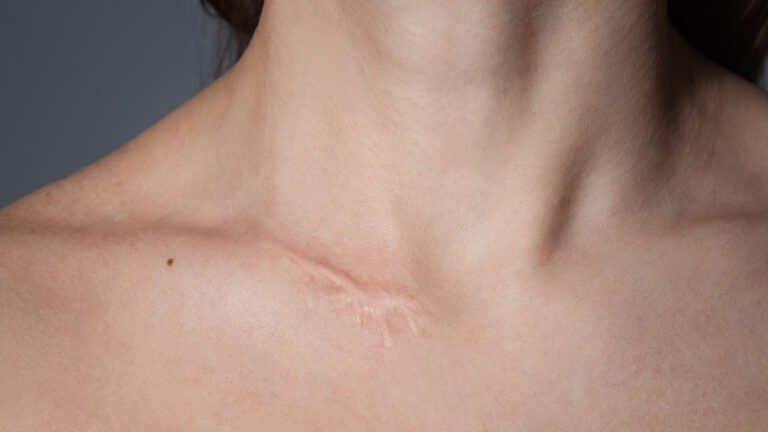Scars are a natural part of the body’s healing process, but there are ways to minimize their appearance and prevent them from becoming too noticeable. Whether it is from a small cut, surgery, or an acne breakout, proper wound care is the key to reducing scar formation.
This includes protecting the area from excessive sun exposure, keeping it clean, and maintaining proper hydration. Additionally, treatments from professional clinics like Rejuvence clinic and products can help speed up the healing process and get rid of scars. There are many reasons that contribute to scar formation if you do not maintain a healthy lifestyle or proper care after any injury happens to your body.
Let’s explore the practical tips to help you keep your skin smooth and scar-free.
Reasons for Scar Formation
Scars form part of the skin’s natural healing process after an injury. Several factors can influence scar formation:
- Type and Depth of the Injury: Deeper or larger wounds, burns, or incisions are more likely to leave scars. The way the skin is injured such as surgical incisions, acne, cuts, affects how it heals and, thus, the formation of scars.
- Infection: If a wound becomes infected, it can lead to more significant scarring. Infections delay the healing process and can cause further damage to the skin tissue.
- Delayed Healing: Wounds that take longer to heal, either due to poor health, inadequate care, or repeated trauma to the area, often result in more noticeable scars.
- Part of the Body: Some areas of the body, like joints (constantly moving) and areas with tight skin, are more prone to scarring.
- Genetics and Skin Type: Some individuals are genetically predisposed to form more noticeable or keloid scars. Additionally, certain skin types might scar more easily than others.
- Age: Older skin tends to be less elastic and may not heal as quickly or effectively, leading to more prominent scarring.
6 Tips to Prevent Scars
1. Proper Wound Care
Preventing scars starts with immediate and gentle care for any wound. In case of any injury, maintain the proper care and clean the area regularly with water or mild soap. This minimizes the risk of infection, which can worsen scarring. Gently pat the area dry and apply an antibiotic cream if necessary.
Keeping the wound covered with a clean, breathable bandage protects it from further injury and contamination. It’s also crucial to avoid picking at scabs, as this disrupts the healing process and can increase the likelihood of scarring.
2. Avoid Excessive Sun Exposure on Healing Skin
Protecting healing skin from sun exposure is key in preventing scars. UV rays can significantly impede the healing process and may darken the appearance of new skin, making any potential scar more pronounced. Cover the area with clothing or apply a high-SPF broad-spectrum sunscreen while a wound is healing. This is particularly crucial for wounds on body areas exposed to sunlight regularly.
3. Follow a Healthy Lifestyle
The general condition of your skin greatly affects how quickly your body heals wounds, affecting how quickly scars form. Maintaining a healthy lifestyle that includes giving up smoking, eating a well-balanced diet rich in vitamins and minerals, and drinking plenty of water will improve skin health.
Good nutrition provides the necessary nutrients for skin repair, hydration keeps the skin supple, and avoiding smoking enhances blood flow, all contributing to efficient healing and minimizing scarring.
4. Stay Hydrated
Staying hydrated is essential for keeping your skin supple and enhancing its ability to heal effectively. When your skin is properly hydrated, it’s more resilient and can recover more quickly from damage. Also, it reduces the risk of scarring.
Regularly drinking water throughout the day is essential in maintaining skin hydration. Using a humidifier can help to keep the air around you moist, which is particularly beneficial for your skin’s hydration in dry climates or during colder months.
5. Maintain a Balanced Diet
A well-balanced diet is vital for healthy skin and efficient wound healing, both important for minimizing scar formation. Ensure your diet includes foods rich in zinc, omega-3 fatty acids, and vitamins C and E, as these nutrients are crucial for collagen production and skin repair.
Incorporating citrus fruits, leafy vegetables, nuts, seeds, and fatty fish like salmon can contribute to a healthier body, promoting quicker healing and less noticeable scarring.
6. Avoid Stretching the Wound Area
Physical stress or stretching on a healing wound can lead to wider and more visible scars. It is important to avoid excessive movement or stretching in the area of the wound, especially during the first few weeks of healing.
For wounds in high-movement areas, such as joints, take extra care and limit the motion that stresses the wound. This may involve modifying activities or using supportive bandages to stabilize the area.
Final Words
Preventing scars boils down to basic wound care practices and healthy lifestyle habits. First and foremost, keeping wounds clean is crucial to minimize the risk of infection, which can exacerbate scarring. Gentle handling of wounds, avoiding picking or scratching at scabs, and using appropriate wound dressings can also help promote proper healing and reduce scarring.
Additionally, staying hydrated, eating a balanced diet rich in vitamins and nutrients, and avoiding smoking can support the body’s natural healing processes and contribute to healthier skin. While scars may still occur despite our best efforts, taking these simple preventative measures can go a long way in reducing their severity and appearance.
Consulting with healthcare professionals for personalized advice and treatment options is always recommended for optimal scar prevention and management.

